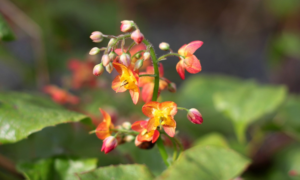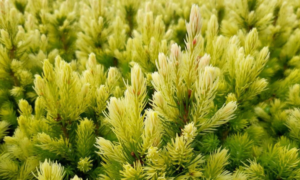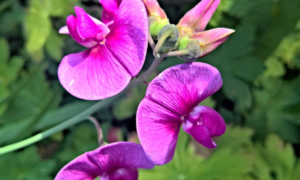We independently research, review, and recommend the best products. If you buy something through our links, we may earn a commission. Learn more.
I know first-hand the joy that a well-planned garden can bring. So, when creating a showstopping spring display, daffodils are essential.
Over the years, I’ve cultivated a deep love for daffodils — testing new varieties as plant breeders develop more colourful combinations. From the classic golden trumpet to the delicate small-cupped species, these versatile flowers are some of the most resplendent, hardy, and weather resistant.
Choosing the right daffodil can be a challenge, especially with more than 27,000 varieties to consider. But thankfully, you don’t have to do the hard work: here I’ve outlined a few of my favourite daffodils to enjoy in spring.
Contents
The history of daffodils
Daffodils have held a special place in British culture for centuries. From St David’s Day to Wordsworth’s description in bloom, these unmistakable flowers have a long history. Their appeal is that they’re hardy, easy to grow, and crucially act as a nectar source for early spring pollinators. Daffodils have even been used as a traditional medicine to treat ailments ranging from fever to arthritis.
As the aforementioned poet wrote, daffodils are known to transform even the bleakest of landscapes into a thing of beauty. That’s why so many other gardeners use them to inject colour into our outdoor spaces when needed most. As they also tend to thrive in cooler climates, they’re an excellent choice when weighing up the vagaries of British weather.
What is the most common type of daffodil?

The most common type of daffodil found in UK gardens is the ‘King Alfred’ variety. It’s a large, trumpet-shaped flower with bright yellow petals and a slightly darker trumpet that many gardeners have used since the early 1900s.
In recent years, green thumbs, including myself, have embraced a wider range of daffodil varieties, with many opting for more unusual colours and shapes to create unique displays.

One such variety that has seen a surge in popularity is the ‘Tête-à-Tête’ daffodil, which is a smaller, multi-flowering variety with bright yellow petals and a neat, compact habit. I love planting in pots and at the front of my borders with flowers that have sharp, contrasting colours.
Other popular daffodil varieties in the UK include the delicate ‘Thalia’, with its pure white petals and small, soft cups, and the striking ‘Ice Follies’, which features pale yellow petals and a large, white trumpet.
Ultimately, which variety you choose will come down to personal preference. In the next section, I’ll discuss which daffodils are my favourite for adding punches of colour.
Daffodils with amazing colours

Firstly, let’s talk about the classic yellow trumpet daffodil. This is the most common type of daffodil, but for perfect reason. Its bright yellow petals and trumpet-shaped corona stand out among herbaceous borders. It’s also one of the earliest to flower, often appearing as early as February in warmer areas. These daffodils are reliable and easy to grow.
Another popular type of daffodil is the white and yellow split corona daffodil. The bi-colour creates a striking contrast against the yellow petals, which really catches the eye. White and yellow split corona daffodils also have a delicate fragrance, adding another layer of appeal.
If you’re looking for something a little different, you might want to try the pink cupped daffodil. As the name suggests, this daffodil has a pink cup-shaped corona, which creates a beautiful contrast against the white petals. Pink cupped daffodils are a great way to add a delicate, feminine touch to your garden, and are spectacular when planted in groups.
Other types of daffodils I love to plant:
- Double daffodils
- Miniature daffodils
- Tahiti
- Hillstar
- Le Torch
- Mission Bells
- Scilly White
Whatever daffodil you pick, remember that each has unique characteristics and growing requirements, so it’s worth first doing some research. The key is finding well-draining soil with plenty of sun exposure.
Tips for maintaining daffodils in your garden

Daffodils are low-maintenance plants that require minimal care, but they do need a bit of attention to ensure that they return year after year. Here are my top tips for maintaining daffodils in your garden:
- Deadhead regularly: Once your daffodils have finished blooming, removing the spent flowers is essential to prevent the plant from putting energy into producing seeds. Deadheading also helps to keep the plant looking tidy and encourages further flower growth in the future.
- Prevent pests and diseases: Daffodils are generally resistant to pests and diseases but are still susceptible to bulb rot and other fungal infections. To prevent these issues, plant your bulbs in well-draining soil, avoid overwatering, and provide adequate air circulation around the plants.
- Fertilise: Daffodils benefit from a balanced fertiliser high in phosphorus and potassium but low in nitrogen. I recommend applying fertiliser in autumn, just after planting, and again in the spring as the foliage emerges. Be careful not to over-fertilise, as this can cause the plants to become top-heavy and fall over.
- Care for bulbs after flowering: Once your daffodils have finished blooming, allow the foliage to die naturally before cutting it back. This helps ensure the plant has enough energy to produce flowers the following year. If you need to move bulbs, wait until the foliage has died back entirely before digging them up.
Following these simple tips, you can enjoy healthy and vibrant daffodils in your garden for many years. Have fun playing with different varieties!






